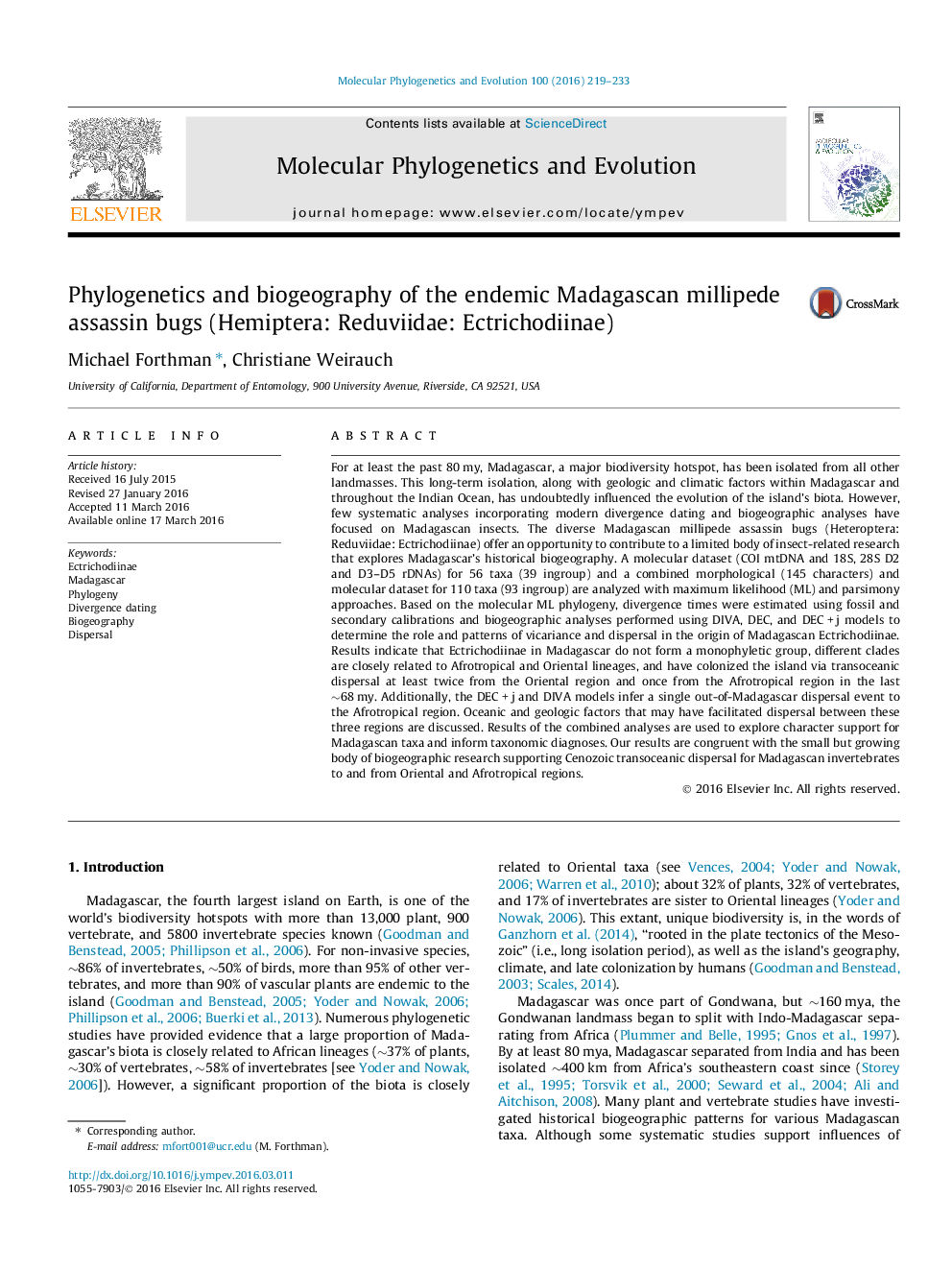| کد مقاله | کد نشریه | سال انتشار | مقاله انگلیسی | نسخه تمام متن |
|---|---|---|---|---|
| 2833664 | 1570797 | 2016 | 15 صفحه PDF | دانلود رایگان |

• Phylogeny and biogeographic history of Madagascan Ectrichodiinae are investigated.
• Molecular and morphological results indicate a non-monophyletic Madagascan fauna.
• Two dispersals from Oriental areas and one from Africa to Madagascar are inferred.
• DIVA and DEC + j, but not DEC, infer an out-of-Madagascar dispersal event to Africa.
• Combined morphological-molecular phylogeny is used to inform taxonomic diagnoses.
For at least the past 80 my, Madagascar, a major biodiversity hotspot, has been isolated from all other landmasses. This long-term isolation, along with geologic and climatic factors within Madagascar and throughout the Indian Ocean, has undoubtedly influenced the evolution of the island’s biota. However, few systematic analyses incorporating modern divergence dating and biogeographic analyses have focused on Madagascan insects. The diverse Madagascan millipede assassin bugs (Heteroptera: Reduviidae: Ectrichodiinae) offer an opportunity to contribute to a limited body of insect-related research that explores Madagascar’s historical biogeography. A molecular dataset (COI mtDNA and 18S, 28S D2 and D3–D5 rDNAs) for 56 taxa (39 ingroup) and a combined morphological (145 characters) and molecular dataset for 110 taxa (93 ingroup) are analyzed with maximum likelihood (ML) and parsimony approaches. Based on the molecular ML phylogeny, divergence times were estimated using fossil and secondary calibrations and biogeographic analyses performed using DIVA, DEC, and DEC + j models to determine the role and patterns of vicariance and dispersal in the origin of Madagascan Ectrichodiinae. Results indicate that Ectrichodiinae in Madagascar do not form a monophyletic group, different clades are closely related to Afrotropical and Oriental lineages, and have colonized the island via transoceanic dispersal at least twice from the Oriental region and once from the Afrotropical region in the last ∼68 my. Additionally, the DEC + j and DIVA models infer a single out-of-Madagascar dispersal event to the Afrotropical region. Oceanic and geologic factors that may have facilitated dispersal between these three regions are discussed. Results of the combined analyses are used to explore character support for Madagascan taxa and inform taxonomic diagnoses. Our results are congruent with the small but growing body of biogeographic research supporting Cenozoic transoceanic dispersal for Madagascan invertebrates to and from Oriental and Afrotropical regions.
Figure optionsDownload as PowerPoint slide
Journal: Molecular Phylogenetics and Evolution - Volume 100, July 2016, Pages 219–233